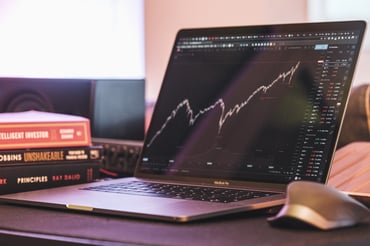This is the sixth blog post in HYPE’s series on the ten most often-asked questions about strategic foresight. While the fifth post offered a step-by-step process for scenario planning to prep your organization for the future, this post elaborates how foresight can inform business model, people & organization development.
As previously discussed in this series, strategy is a business’ answer to the questions of where to play and how to win. Foresight supports these futures planning efforts in many ways: It can inspire vision, guide goal setting, inform strategic choices, fuel execution, and facilitate feedback following implementation. Companies utilizing tools for strategic foresight have a competitive advantage—these tools influence business models and often shape people and organizational development to align with, and best execute, the identified strategy. Additionally, foresight can inform the direction and timing of these findings.
Strategy building and scenario planning surrounding business models and people and process development can be shaped using signals surrounding the organization. This information – insights, trends, technology trajectories, and the like – can be scouted and aggregated to conduct research and derive suggestions for specific action. As technologies and trends tend to change more rapidly than organizations are able to adapt their business models, capabilities and organizing, foresight enables faster learning and smarter governance.
Foresight for business model development
It is a business model demonstrates how a company creates and captures value. Facets of business included are the company's infrastructure (key partners, key activities, key resources), offerings (value propositions), customers (customer relationships, customer segments, channels), and financials (cost structure, revenue streams). For each of these elements, data insights, trends, and technology development trajectories can be scouted, monitored, and translated into action items.
Foresight aids in both exploration and adaptation of business models from innovating completely new structures to incrementally improving existing ones. In terms of developing of business models, foresight can answer questions across the canvas including:
- Infrastructure: Who would be our key partners and what key activities & resources would our value proposition / relationships / channels / revenue streams require?
- Offering: What value could we deliver to our customers in the future?
- Customers: Who would be our most important customers in the future, what kind of relationships would we have, and across which channels would we reach them?
- Financials: For what and how would customers pay? What would be the most important costs associated?
Usually, these questions are asked by those in business development and innovation management. Often, the answers are pieced together with data and insight provided by internal or external scouts and trend managers surrounding the changes in a company’s environment as a means to shape business model development. These external sources could, for example, build a dedicated database of technologies impacting such development that also allows for their evaluation (e.g., technology readiness level).
Questions surrounding foresight in business model development often include:
Who would be our key partners?
What activities and resources would be required?
How would it impact our infrastructure, value proposition, relationships, channels, or revenue streams?
To answer this, a mobility company could scout trends, patents, competitor insights, technologies, and changes in legislation related to autonomous and electric vehicles to determine how to best pace the transformation and electrification of their fleet. A different solution might come from an apparel company scouting a separate set of signals, trends, and technologies related to recycled and sustainably-sourced fibers to fulfill their value proposition of more environmentally-friendly products.
Sometimes, foresight creates a technology push or reveals a market pull for changes needed within a company’s business model.
The same mobility company could be facing a technology push to further develop areas in their business model. Conversely, the apparel company could be experiencing more of a market pull from consumer demands.
In addition to scouting, scenario planning can be of benefit regarding timing of changes to the business model. For example, creating scenarios around the adoption of electric vehicles (slow to rapid) and development of associated technology costs can provide support to companies in the industry in deciding when and how much to invest in development and prepare for the possible changes in the pace of adoption early on.
Foresight for people and organization development
Foresight activities, such as scouting and scenario work, guide people and organization development in a way similar to that of business model development. Often, the following questions are on the minds of human resource and business leaders when prioritizing development and building roadmaps for the future:
What competences and roles would need to be developed and how?
How people prefer to work, to be led, and to make a living from work?
How should we develop our culture and leadership?
When and for what purposes should we utilize automation and robotization?
What specific tasks are we to automate and when?
How would the future office or production facility look?
For people and organization development, insight and signals could be collected on “future of industry and manufacturing” or “future of remote work and income” and leveraged to strategize business development. With a dedicated foresight tool, HR and business leaders can build radars to track developments surrounding custom topics. Here, internal or external trend scouts can guide changes across a company’s environment with data-supported evidence as an input for decision-making on people and organization development which will help in answering the questions that are vital for longer-term development competencies, talent management, facility management, workforce planning, and culture and leadership development.
Business models and people and organization development both require a systematic approach to identify and analyze impactful signals, trends, and technologies. A well-functioning foresight process feeds into strategy creation, business opportunity identification, innovation management, and the development of people, culture, and competence. Defining roles, responsibilities, and incentives related to foresight helps ensure enough attention is dedicated to foresight. Foresight can have dedicated positions (e.g., Director of Strategy, Insight Manager, Trend Manager or Scout), or responsibilities can be divided into functional roles (e.g., Head of HR, Director of Product Development). Regardless of how the work is organized, there are many internal stakeholders that reap benefits from foresight activities.








